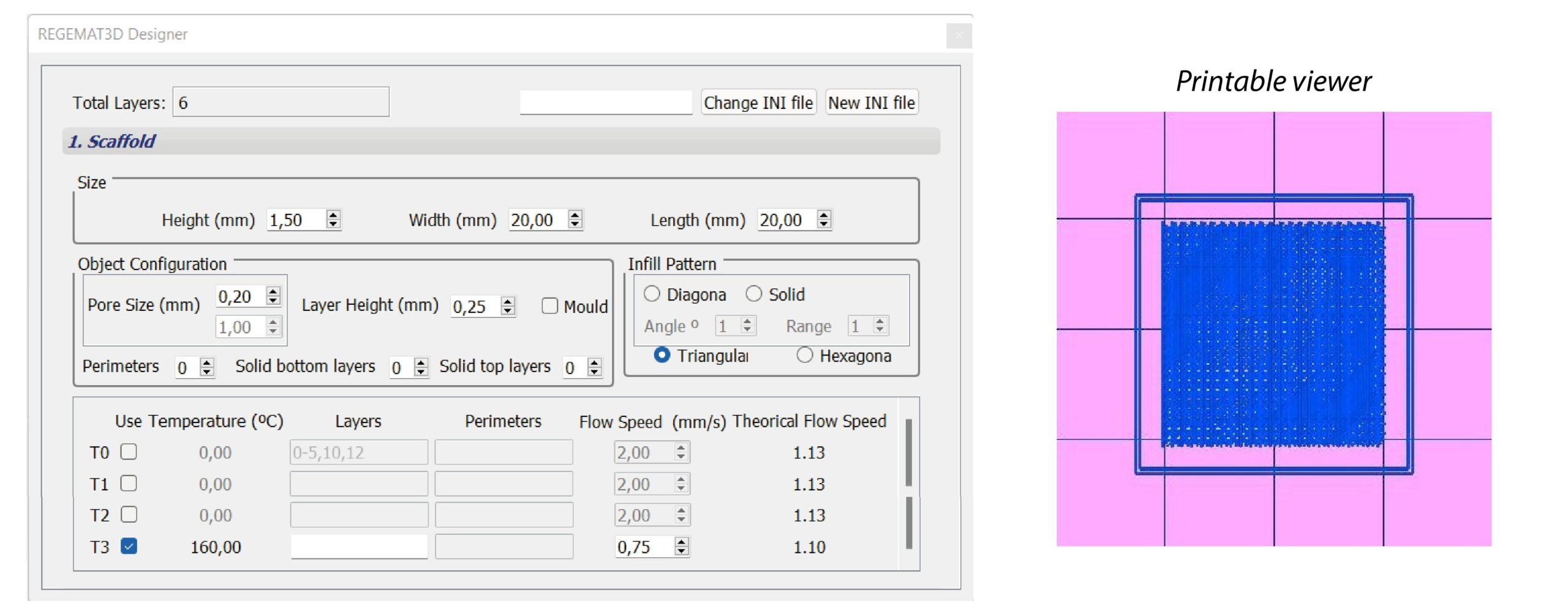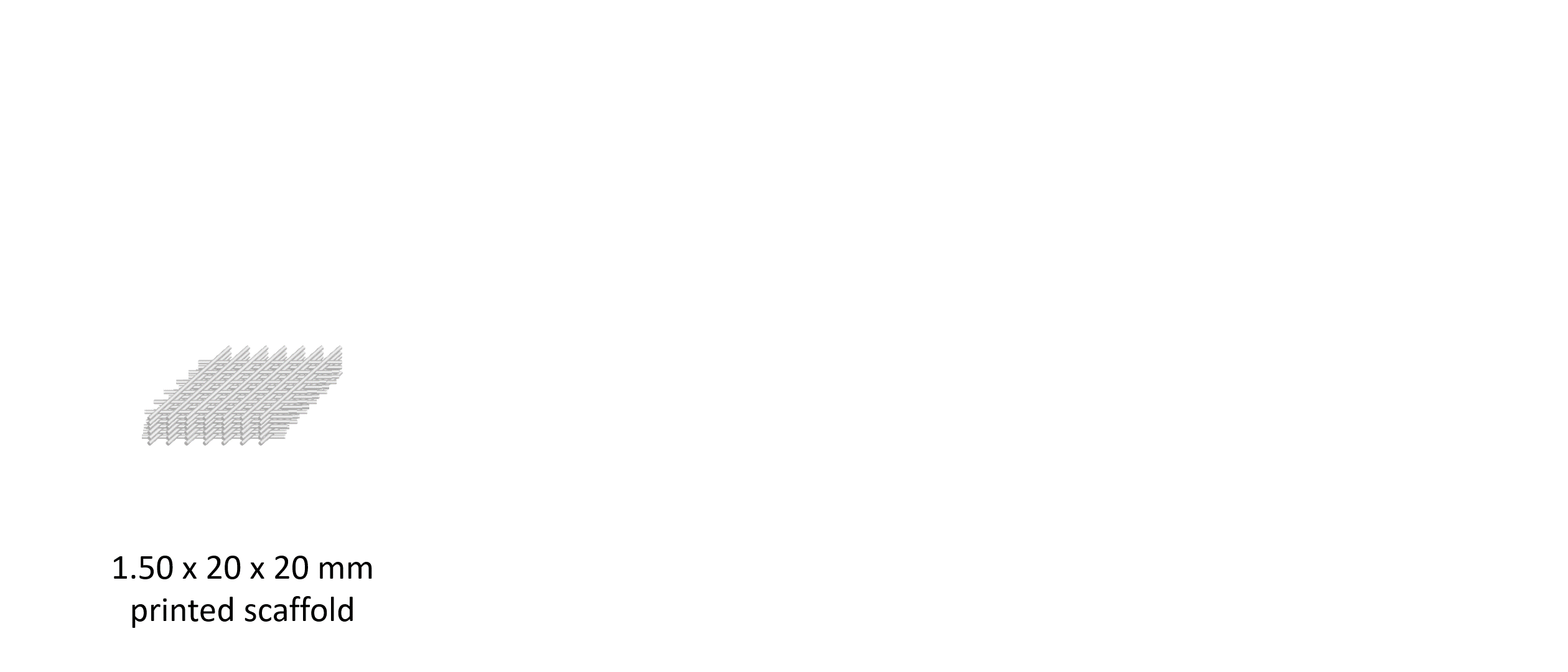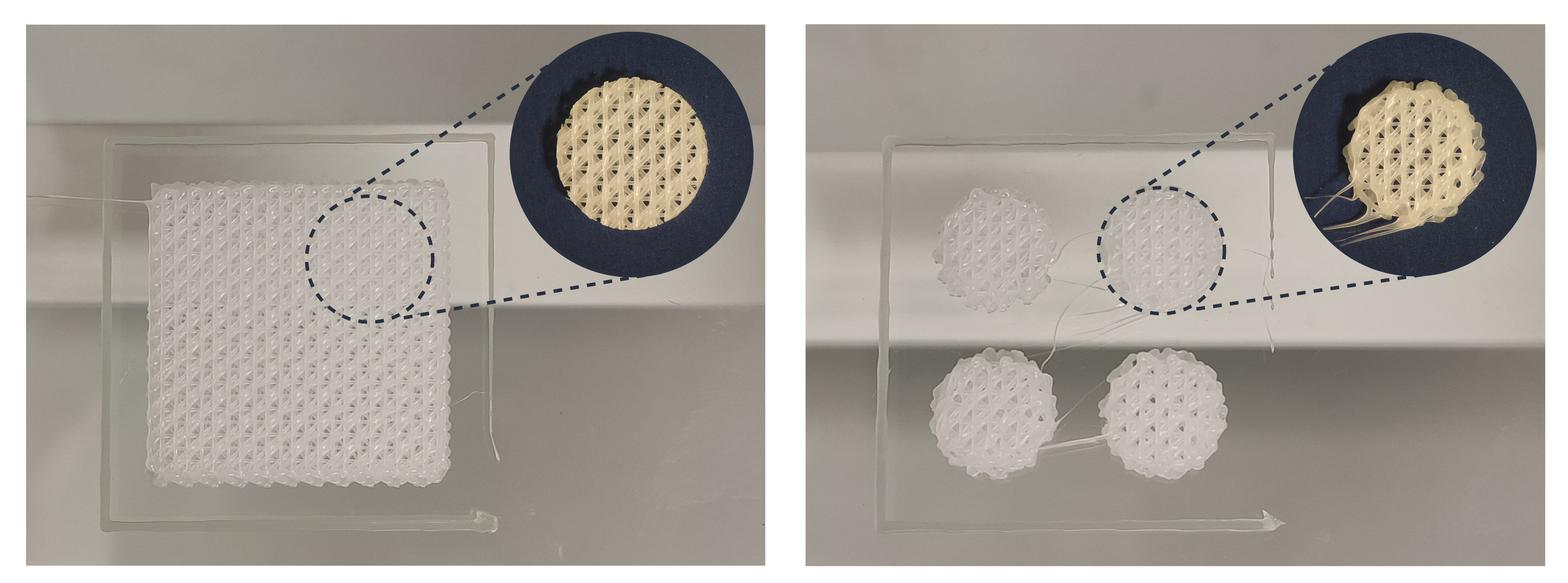Facilan™ PCL 100 Filament (MW = 50000 g/mol) was used as 3D printing filament. The scaffolds were designed with the software Regemat3D Designer v1.4.4 and printed using a Regemat3D Bio V1® bioprinter (REG4Life, REGEMAT 3D, Granada, Spain) equipped with a glass bed and a 0.4 mm diameter nozzle. The scaffolds were printed with a retract speed of 10 mm/s and an infill speed of 11 mm/s using the following parameters:

In order to enhance the reproducibility of the experiments and reduce the variability between the samples, a 8-mm biopsy punch was used to prepare defined and reproducible scaffolds, obtaining four disks-shaped scaffolds of 8 x 1.5 mm (diameter, height) from each printed scaffold.

The scaffolds obtained are suitable to be used in 6, 12, 24 and 48 WP culture plates and comply with the recognized international standards ISO/FDIS 23317 (Implants for surgery — In vitro evaluation for apatite-forming ability of implant materials), that recommend a size of 10±2 mm in diameter and 2±1 mm in height when working with disk-shaped specimens. It is worth noting that the scaffolds obtained have an open and interconnected porosity, which allows the flow of oxygen, nutrients and cells from the external environment to the inner parts of the scaffolds, making them ideal for in vitro and in vivo assays.

References
López-González, I.; Zamora-Ledezma, C.; Sanchez-Lorencio, M.I.; Tristante Barrenechea, E.; Gabaldón-Hernández, J.A.; Meseguer-Olmo, L. Modifications in Gene Expression in the Process of Osteoblastic Differentiation of Multipotent Bone Marrow-Derived Human Mesenchymal Stem Cells Induced by a Novel Osteoinductive Porous Medical-Grade 3D-Printed Poly(ε-caprolactone)/β-tricalcium Phosphate Composite. Int. J. Mol. Sci. 2021, 22, 11216. https://doi.org/10.3390/ijms222011216
| Number | Category | Product | Amount |
|---|---|---|---|
| 1 | - | Facilan PCL100 | 1 |
